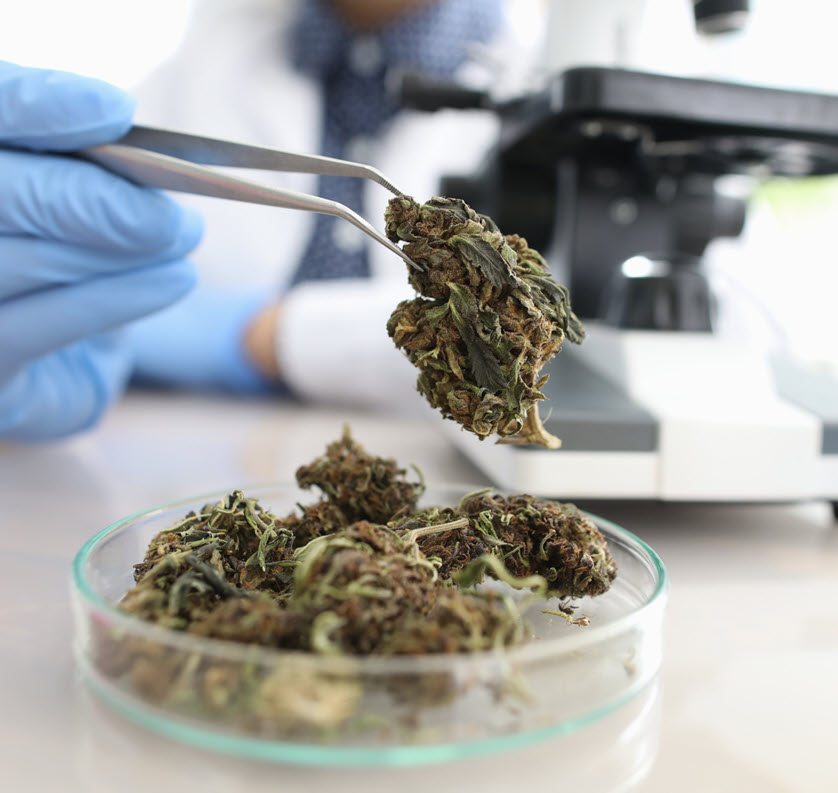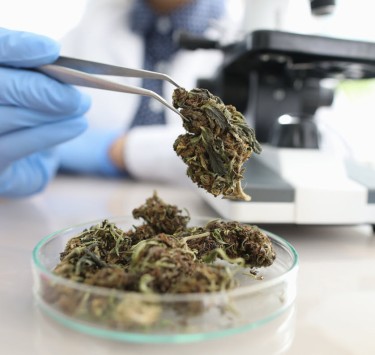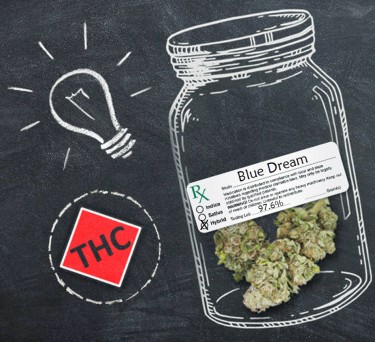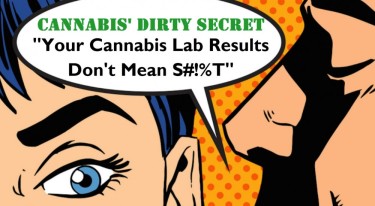Cannabis News
Ban All High-THC Cannabis Strains and Products!
Published
9 months agoon
By
admin

As attitudes toward cannabis continue to evolve, so too does our understanding of its potency, particularly concerning the psychoactive compound THC. Tetrahydrocannabinol (THC) is the primary chemical responsible for the euphoric effects commonly associated with cannabis consumption. However, the definition of what constitutes “high THC” content remains a subject of debate and regulatory scrutiny. In this era of expanding legalization and commercialization, it’s essential to delve into the nuances of THC potency and its implications, especially regarding consumer safety and regulatory compliance. Additionally, exploring whether the criteria for high THC content differ between states is crucial for understanding the broader landscape of cannabis regulation and its impact on both consumers and the industry. By examining these aspects, we can gain insights into the complexities of cannabis policy and its intersection with public health, consumer preferences, and legal frameworks.
Understanding THC Potency Levels
Determining what constitutes high THC potency in the context of cannabis use is a complex process that depends on several factors. Tetrahydrocannabinol, or THC, is the main psychoactive ingredient in cannabis and is what gives the plant its well-known euphoric effects. High potency cannabis strains have historically been defined as those with THC contents above 20%. Different specialists and regulatory authorities have different viewpoints, therefore this criterion isn’t something that’s widely accepted. While some contend that THC concentrations over 15% should be considered high potency, others support a higher standard of 25% or more. Additionally, advancements in cultivation techniques have led to the development of ultra-potent strains boasting THC concentrations well above 30% or even 35%. This variability underscores the complexity of defining high THC content and highlights the need for standardized criteria to guide both consumers and regulators.
Furthermore, comprehending high THC potency entails looking beyond simple numerical boundaries and exploring the whole picture of cannabis use. What each user considers high potency varies greatly depending on factors including intended effects, ingestion techniques, and individual tolerance levels. Even modest THC levels can have significant impacts on inexperienced users or those with lesser tolerances; experienced users, on the other hand, could go for items with higher concentrations for more potent effects. Furthermore, the mode of ingestion—smoking, vaping, edibles, or concentrates—can affect the strength and speed at which THC effects manifest. As a result, identifying excessive THC concentration necessitates a sophisticated method that takes into account user preferences and consumption patterns in addition to numerical criteria.
The rise in THC strength found in cannabis products has spurred debates over use guidelines, safety, and effectiveness. Excessive potency raises concerns about potential negative consequences, especially for inexperienced users or those prone to cannabis-related disorders, even while it may appeal to those customers seeking extreme euphoric experiences or substantial medicinal advantages. Public health experts and regulatory bodies also struggle to strike a balance between protecting consumer access, guaranteeing product safety, and minimizing possible risks related to high THC levels. To address these issues and provide consumers the capacity to make responsible decisions, education programs that support harm reduction techniques and informed consumption habits are crucial. In the end, identifying high THC concentration necessitates a thorough comprehension of its effects on specific users as well as larger public health and legal systems.
Variations in State Regulations: The Legal Landscape of THC Content
varying states in the US have varying restrictions as a result of the legalization of cannabis for both medical and recreational use. The way THC potency is handled and regulated has changed significantly as a result of this decentralized approach. While some jurisdictions have set explicit limits on the maximum amount of THC that may be included in cannabis products, others have left it up to the producers or placed limitations in place through testing and labeling regulations. Because of this, different states may have rather different standards for what constitutes high THC concentration, which presents problems for growers, users, and authorities alike.
Regulatory bodies frequently establish maximum THC restrictions for different product categories, including as flower, concentrates, edibles, and infused items, in jurisdictions where cannabis is legal. By prohibiting the sale of goods with excessive potency, these limitations aim to protect consumer safety and standardize potency levels. States differ greatly in their precise criteria, though. Some have conservative limitations in place to reduce the possible hazards associated with excessive THC intake, while others permit greater potency products to meet customer demand. Furthermore, there might be variations in the techniques employed to measure THC levels, which can cause disparities in the potency reported and make it more difficult for companies with different locations to comply with regulations.
THC regulations are inconsistent, which presents a problem for industry participants as well as consumers. Consumers may find it difficult to understand the wide range of THC potency standards, particularly if they travel between states or buy products from different markets. Manufacturers may also find it more difficult to sell their products because they will have to reformulate or modify their products to meet the requirements of each jurisdiction. Manufacturers may also find it more expensive to produce their products. To address concerns and standardize laws while preserving each state’s ability to regulate cannabis inside its boundaries, state governments, regulatory bodies, and industry players may need to work together in order to achieve such consistency.
Bottom Line
In the dynamic landscape of cannabis legalization and regulation, defining high THC content remains a multifaceted challenge. While historically THC concentrations above 20% have been indicative of high potency, discrepancies arise due to differing viewpoints among specialists and regulatory bodies, compounded by factors such as cultivation advancements and ingestion methods. Understanding high THC potency extends beyond numerical thresholds, encompassing individual tolerance levels, intended effects, and consumption preferences, with novice users potentially more susceptible to even modest THC levels while experienced users may seek higher concentrations for pronounced effects. The mode of ingestion further complicates potency assessment. Additionally, the emergence of ultra-potent strains sparks discussions on safety, efficacy, and consumer preferences, necessitating education and harm reduction strategies, especially for inexperienced users. Regulatory frameworks governing THC content vary widely between states, ranging from explicit limits to decentralized approaches, posing challenges for industry participants and consumers, leading to inconsistencies in product availability and compliance. Achieving consistency in THC regulations while respecting state autonomy demands collaboration among governments, regulatory bodies, and industry stakeholders to ensure consumer safety and product quality across diverse markets, vital as attitudes toward cannabis continue evolving, requiring comprehensive approaches to address THC potency’s complexities and regulatory implications for responsible consumption and public health.
BANNING BASED ON HIGH-THC LEVELS, READ ON…
You may like
Cannabis News
How Do You Stop Lab-Shopping for the Highest THC Results?
Published
11 hours agoon
December 24, 2024By
admin

In a decisive move aimed at bolstering consumer safety and ensuring the integrity of cannabis products, Massachusetts regulators have mandated that all cannabis products must undergo testing at a single, licensed laboratory. This new regulation comes in response to the growing issue of “lab shopping,” where cannabis producers seek favorable testing results by sending their products to multiple laboratories. The Massachusetts Cannabis Control Commission (CCC) announced this significant regulatory change after extensive consultations with industry stakeholders, public health officials, and consumer advocates.
This article explores the implications of this regulation for the cannabis industry, consumers, and public health. It also examines the broader context of cannabis regulation in Massachusetts and the potential impact of this decision on the future of the state’s cannabis market.
Understanding Lab Shopping
What is Lab Shopping?
Lab shopping refers to the practice where cannabis producers send their products to various testing laboratories in search of the most favorable results. Producers may choose labs based on their reputation for leniency or their history of providing positive results. This behavior can lead to significant discrepancies in product safety assessments and quality assurance.
The Risks Associated with Lab Shopping
1. Consumer Health Risks: The primary concern surrounding lab shopping is the potential risk it poses to consumer health. Inconsistent testing results mean that products containing harmful contaminants—such as pesticides, heavy metals, or mold—may be sold without proper scrutiny. This can lead to serious health issues for consumers who unknowingly purchase tainted products.
2. Market Integrity: Lab shopping undermines the integrity of the legal cannabis market. When consumers cannot trust that products have been tested rigorously and uniformly, it erodes confidence in legal cannabis sales and can drive customers back to illicit markets where safety standards are nonexistent.
3. Regulatory Challenges: For regulators like the CCC, lab shopping complicates enforcement efforts. It becomes increasingly difficult to monitor compliance when producers can easily switch labs to obtain favorable results, making it challenging to ensure that all products meet established safety standards.
The Regulatory Response
The Role of the Cannabis Control Commission (CCC)
The Massachusetts Cannabis Control Commission is tasked with regulating the state’s cannabis industry. As part of its mandate, the CCC has worked diligently to establish a comprehensive regulatory framework that governs various aspects of cannabis production and sale. However, as the industry has evolved, so too have the challenges associated with ensuring product safety and quality.
In light of growing concerns about lab shopping and its implications for public health and safety, the CCC recognized the need for a more robust regulatory framework. After extensive discussions with industry stakeholders and public health officials, the commission concluded that a single-lab testing requirement was necessary to address these issues effectively.
Implementation of Single-Lab Testing
In late 2023, following thorough deliberation and stakeholder engagement, the CCC announced its new regulation mandating that all cannabis products must be tested by a single licensed laboratory before they can be sold to consumers. This decision aims to achieve several key objectives:
-
Standardize Testing Protocols: By requiring that all products be tested by a single lab, regulators can ensure that all products are subject to consistent testing standards. This uniformity is crucial for maintaining product quality and safety across the market.
-
Enhance Accountability: A single-lab requirement makes it easier for regulators to hold laboratories accountable for their testing practices. If discrepancies arise in testing results, it will be clear which laboratory conducted the tests, facilitating more straightforward investigations.
-
Improve Consumer Confidence: With consistent testing results across all products, consumers can feel more secure in their purchases. This increased confidence is vital for fostering a healthy legal cannabis market in Massachusetts.
Implications of Single-Lab Testing
For Producers
1. Increased Accountability: Producers will need to establish relationships with specific laboratories and ensure that their products meet stringent quality standards before submission for testing. This shift will require producers to invest more in quality control measures throughout their production processes.
2. Potential Cost Implications: While single-lab testing may streamline processes for some producers, it could also lead to increased costs if producers are required to pay higher fees for comprehensive testing services. Smaller producers may find it particularly challenging to absorb these costs.
3. Adaptation Period: Producers will need time to adjust their operations and supply chains to comply with this new regulation. This may involve reevaluating partnerships with existing labs or investing in new quality control measures.
4. Impact on Product Development: The requirement for single-lab testing may also influence how producers develop new products. With fewer laboratories available for testing, producers may need to plan their product launches more carefully and allow additional time for testing processes.
For Laboratories
1. Increased Demand for Services: Licensed laboratories may experience an increase in demand as producers consolidate their testing needs with fewer facilities. This could lead to higher revenues for labs but also increased pressure on them to maintain high-quality standards amidst growing workloads.
2. Need for Enhanced Capabilities: Laboratories will need to ensure they have the capacity and technology necessary to handle increased volumes of samples while maintaining rigorous quality control measures. This may require investments in new equipment or hiring additional staff.
3. Regulatory Compliance: Laboratories will face heightened scrutiny from regulators as they become key players in ensuring product safety. They will need to demonstrate compliance with all relevant regulations and maintain transparent practices regarding their testing methodologies.
For Consumers
1. Improved Product Safety: The primary benefit for consumers is enhanced safety assurance. With standardized testing protocols in place, consumers can trust that cannabis products have been thoroughly vetted for contaminants and potency before reaching store shelves.
2. Greater Transparency: As part of this regulatory shift, there may be increased transparency regarding testing results and laboratory practices. Consumers will have access to clearer information about what goes into their cannabis products, empowering them to make informed choices.
3. Potential Price Increases: While improved safety is paramount, there is a possibility that compliance costs could be passed on to consumers through higher prices for cannabis products. Producers may need to adjust their pricing structures in response to increased operational costs associated with single-lab testing.
Cannabis Regulation in Massachusetts
Historical Overview
Massachusetts was one of the first states in New England to legalize recreational cannabis use following the passage of Question 4 in 2016. The legalization marked a significant shift in public policy and opened up a new economic sector within the state. However, as with any emerging industry, challenges quickly arose—particularly concerning product safety and quality assurance.
Existing Regulatory Framework
Prior to the introduction of single-lab testing regulations, Massachusetts had established a comprehensive regulatory framework governing various aspects of cannabis production and sale:
Despite these measures, lab shopping highlighted gaps in enforcement and compliance that necessitated further action from regulators.
Industry Reactions
Support from Public Health Advocates
Public health advocates have largely welcomed the CCC’s decision to implement single-lab testing as a crucial step toward safeguarding public health by ensuring that all cannabis products meet consistent safety standards. Many believe this regulation will help prevent contaminated or substandard products from reaching consumers while bolstering trust in legal cannabis sales.
Dr. Emily Thompson, a public health expert at Harvard University, stated, “This regulation is essential for protecting consumers from potential health risks associated with contaminated cannabis products.”
Concerns from Industry Stakeholders
Conversely, some industry stakeholders have expressed concerns about potential drawbacks:
1. Operational Challenges: Smaller producers may find it difficult to navigate relationships with larger laboratories or face delays in getting their products tested due to increased demand at those facilities.
2. Innovation Stifling: Critics argue that requiring single-lab testing could stifle innovation within the industry by limiting producers’ options for exploring different testing methodologies or technologies offered by various labs.
3. Market Dynamics: There are worries that this regulation could create monopolistic tendencies within laboratory services if only a few labs dominate the market due to increased demand from producers seeking reliable test results.
4. Impact on Small Businesses: Small-scale cultivators might struggle more than larger companies due to limited resources and access to high-quality labs capable of meeting stringent requirements without significantly raising costs.
Future Outlook
As Massachusetts implements this new regulation mandating single-lab testing for all cannabis products sold within its borders, it sets an important precedent that other states may consider as they navigate similar challenges within their own burgeoning cannabis markets.
Potential National Implications
The decision by Massachusetts regulators could influence national discussions around cannabis regulation as other states look toward creating frameworks that prioritize consumer safety while fostering industry growth:
-
Increased Interest from Other States: States grappling with similar issues related to lab shopping may look closely at Massachusetts’ approach as they develop their own regulations.
-
Collaboration Among States: As states continue legalizing recreational marijuana use across the country, there may be opportunities for collaboration on best practices regarding product safety standards and laboratory oversight.
-
Federal Considerations: With ongoing discussions about federal legalization of marijuana gaining traction nationally—especially amid shifting political landscapes—regulatory models like those emerging from Massachusetts could serve as templates for future federal guidelines governing cannabis production and sale across state lines.
Conclusion
The Massachusetts Cannabis Control Commission’s mandate for single-lab testing represents a pivotal shift in evaluating cannabis products for safety and quality assurance within one of the nation’s most dynamic legal marijuana markets. By targeting the issue of lab shopping, this regulation prioritizes consumer protection, aiming to enhance public health outcomes and rebuild confidence in the safety of legalized cannabis products. While the transition poses challenges for producers adapting operational processes and laboratories scaling their capabilities, the regulation seeks to balance fostering innovation in an evolving industry with rigorous oversight mechanisms. As Massachusetts refines its regulatory framework, balancing the interests of regulators and profit-driven stakeholders, collaboration will be essential to thriving under these new guidelines. This change not only advances the state’s cannabis sector but also sets a potential standard for other states to ensure safe consumption and responsible business practices in the growing marijuana industry.
LAB SHOPPING FOR HIGH THC RESULTS? READ ON…
Cannabis News
Happy Holidays from The Canna Law Blog
Published
12 hours agoon
December 24, 2024By
admin
Wishing all of our readers, along with friends and families, the very best this holiday season.
Whether you celebrate Hanukkah, Christmas, Kwanzaa, Winter Solstice, Festivus, or something else, we hope you can kick back and enjoy this wonderful time of the year.
The post Happy Holidays from The Canna Law Blog appeared first on Harris Sliwoski LLP.
Cannabis News
5 Cannabis Christmas Recipes to Try This Holiday Season at Home or the Office Party!
Published
2 days agoon
December 23, 2024By
admin

Ah yes, it’s that magical time of year again when Ganja Clause slides down the chimney to visit all the good little stoners. The lights are twinkling, the fire is crackling, and the sweet aroma of cannabis-infused treats fills the air. As someone who’s spent years experimenting with cannabis cuisine, I’ve learned that the holidays present the perfect opportunity to elevate traditional recipes to new heights.
To help make your holidaze more “dazey,” I’ve crafted five festive recipes that combine seasonal favorites with our favorite herb. These dishes aren’t just about getting high – they’re about creating memorable experiences and new traditions. But before we dive in, I need to emphasize something crucial: dosing is always important, and you should NEVER give these recipes to anyone without their explicit consent. While sharing is caring, tricking someone into consuming cannabis is not only unethical but potentially illegal. Always clearly label your infused treats and keep them safely away from children and unsuspecting guests.
With those important notes out of the way, let’s get into these magical recipes that will make your holiday season extra special.
Look, we all know eggnog is a holiday staple, but why not kick it up a notch? This cannabis-infused version will have you feeling jolly in no time. Just remember – this isn’t your grandma’s recipe (unless your grandma is really cool).
What You’ll Need:
-
4 cups milk (or non-dairy alternative if that’s your jam)
-
1 cup heavy cream (or coconut cream for you plant-based folks)
-
6 egg yolks (fresh is best, trust me)
-
1/2 cup sugar
-
1 tsp vanilla extract
-
1/2 tsp ground nutmeg
-
1 tbsp cannabis tincture or cannabis-infused syrup
The Magic Process:
-
Start by heating your milk and cream in a saucepan. You want it hot but not boiling – we’re making eggnog, not scrambled eggs.
-
In a separate bowl, whisk those egg yolks, sugar, and vanilla until they’re well combined and looking smooth.
-
Here’s the tricky part: slowly (and I mean SLOWLY) add the hot milk mixture to your egg mixture while whisking constantly. If you dump it all in at once, you’ll end up with sweet scrambled eggs, and nobody wants that.
-
Pour everything back into your saucepan and cook over medium heat, stirring constantly until it thickens enough to coat the back of a spoon.
-
Remove from heat, stir in that nutmeg, and let it cool a bit before adding your cannabis tincture or syrup.
-
Chill thoroughly before serving.
Pro tip: Start with a small serving – this stuff can creep up on you!
Want to elevate your holiday meal? This gravy will take your feast to new heights. It’s perfect for drowning those mashed potatoes or smothering that turkey.
The Goods:
-
2 cups chicken or vegetable stock
-
1/4 cup all-purpose flour
-
1/4 cup cannabis butter (cannabutter)
-
1/2 tsp salt
-
1/4 tsp black pepper
-
1 tbsp chopped fresh herbs (thyme or rosemary work great)
The How-To:
-
Melt your cannabutter over medium heat in a saucepan. Watch it carefully – burnt butter is not the vibe we’re going for.
-
Whisk in the flour to create your roux. Cook it for about 1-2 minutes to get rid of that raw flour taste.
-
Now, slowly pour in your stock while whisking like your life depends on it. No lumps allowed!
-
Add your seasonings and herbs.
-
Keep stirring and simmering until it reaches your desired thickness.
-
Taste and adjust seasonings if needed (before you get too lifted).
Remember: Label this clearly! You don’t want Aunt Martha accidentally pouring this all over her plate without knowing what’s up.
Forget that canned stuff – this homemade cranberry sauce with a special twist will have everyone at the table asking for seconds (though you might want to limit them to just one serving).
The Ingredients:
Getting Saucy:
-
Toss your cranberries, OJ, and sugar into a saucepan over medium heat.
-
Let it cook until those cranberries start popping like tiny little fireworks (about 10 minutes).
-
Once it’s thickened up nicely, remove from heat.
-
Here comes the fun part – stir in your cannabis-infused honey or tincture.
-
Let it cool completely before serving.
Pro tip: Make two batches – one regular and one infused. Just make sure to label them clearly!
These aren’t your regular sweet potatoes – they’re elevated sweet potatoes. Perfect for getting baked while getting baked.
What You Need:
-
4 large sweet potatoes
-
1/2 cup cannabis butter (cannabutter)
-
1/4 cup brown sugar
-
1 tsp ground cinnamon
-
1/2 tsp ground nutmeg
-
Salt to taste
-
Marshmallows (optional, but highly recommended)
The Method:
-
Preheat your oven to 375°F (190°C).
-
Bake those sweet potatoes until they’re tender (about an hour).
-
Once they’re cool enough to handle, peel and mash them up.
-
Mix in your cannabutter, brown sugar, and spices.
-
Transfer to a baking dish.
-
If you’re feeling extra, top with marshmallows.
-
Bake for another 20-30 minutes until everything’s golden brown and gorgeous.
Warning: These are dangerously delicious – pace yourself!
This warm, spicy cider will lift your spirits in more ways than one. Perfect for those chilly winter nights.
The Essentials:
The Process:
-
Pour your cider into a large pot.
-
Add your cinnamon sticks, cloves, and orange slices.
-
Heat until it just starts to bubble, then reduce to a simmer.
-
Add your cannabis-infused maple syrup (or add tincture to individual cups for controlled dosing).
-
Let everything mingle and get cozy for about 20 minutes.
-
Serve it up warm with an orange slice or cinnamon stick garnish.
Pro tip: Keep a non-infused batch warming for designated drivers and non-partaking guests.
Remember folks, the key to a successful Dankmas feast is clear labeling and careful dosing. Nothing ruins a holiday gathering quite like someone getting unexpectedly zooted. Happy cooking, and may your holidays be dank and delightful!
There you have it, folks – five unique ways to spice up your Dankmas traditions and make the season truly memorable. As someone who’s hosted many cannabis-friendly holiday gatherings, I can’t stress enough the importance of starting slow with these recipes. Edibles can take anywhere from 30 minutes to two hours to fully kick in, and you definitely don’t want to overdo it during family dinner. I strongly recommend doing a test run with different dosages before the big day to find your sweet spot.
What I love most about these recipes is that they offer a fantastic alternative for those looking to skip the traditional alcohol-heavy holiday celebrations. Cannabis provides a more natural way to unwind and connect with loved ones during this special time of year. Plus, you won’t have to worry about a hangover the next morning!
Remember to celebrate responsibly, be open about what’s infused and what isn’t, and most importantly, enjoy the magic of the season. Happy Dankmas to all, and to all a good height!
MORE DANKMAS STORIES, READ ON…

Breaking the Grass Ceiling: Pot firms rethink strategy as young women lead cannabis use

California New Laws for 2025: Cannabis Cafes and Entertainment Zones

This Company Wants To Pay You To Smoke Marijuana And Write ‘Amazing Reviews’

Is it legal to fly with marijuana? Here are the laws you need to know

How Much Does an Ounce of Cannabis Flower Cost Entering 2025?

New York Governor Signs Bills To Resume Marijuana Farmers Markets And Classify Cannabis As Agricultural Product

Cannabis Can Help With Holiday Stomach Issues

How Do You Stop Lab-Shopping for the Highest THC Results?

Happy Holidays from The Canna Law Blog

A New Cannabis Christmas Tradition For Santa

Distressed Cannabis Business Takeaways – Canna Law Blog™

United States: Alex Malyshev And Melinda Fellner Discuss The Intersection Of Tax And Cannabis In New Video Series – Part VI: Licensing (Video)

What you Need to Know

Drug Testing for Marijuana – The Joint Blog

NCIA Write About Their Equity Scholarship Program

It has been a wild news week – here’s how CBD and weed can help you relax

Cannabis, alcohol firm SNDL loses CA$372.4 million in 2022

A new April 20 cannabis contest includes a $40,000 purse

Your Go-To Source for Cannabis Logos and Designs

UArizona launches online cannabis compliance online course
Trending
-

 Cannabis News2 years ago
Cannabis News2 years agoDistressed Cannabis Business Takeaways – Canna Law Blog™
-

 One-Hit Wonders2 years ago
One-Hit Wonders2 years agoUnited States: Alex Malyshev And Melinda Fellner Discuss The Intersection Of Tax And Cannabis In New Video Series – Part VI: Licensing (Video)
-

 Cannabis 1012 years ago
Cannabis 1012 years agoWhat you Need to Know
-

 drug testing1 year ago
drug testing1 year agoDrug Testing for Marijuana – The Joint Blog
-

 Education2 years ago
Education2 years agoNCIA Write About Their Equity Scholarship Program
-

 Cannabis2 years ago
Cannabis2 years agoIt has been a wild news week – here’s how CBD and weed can help you relax
-

 Marijuana Business Daily2 years ago
Marijuana Business Daily2 years agoCannabis, alcohol firm SNDL loses CA$372.4 million in 2022
-

 California2 years ago
California2 years agoA new April 20 cannabis contest includes a $40,000 purse






